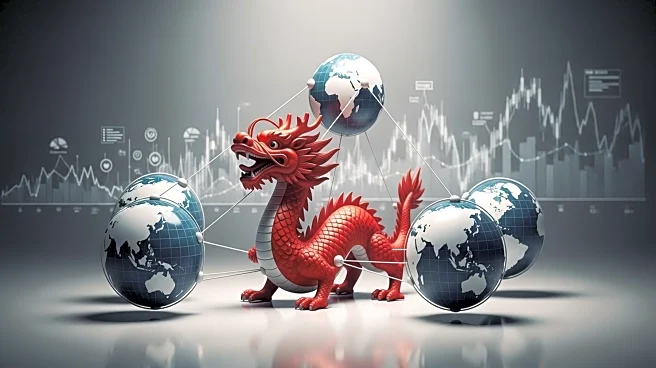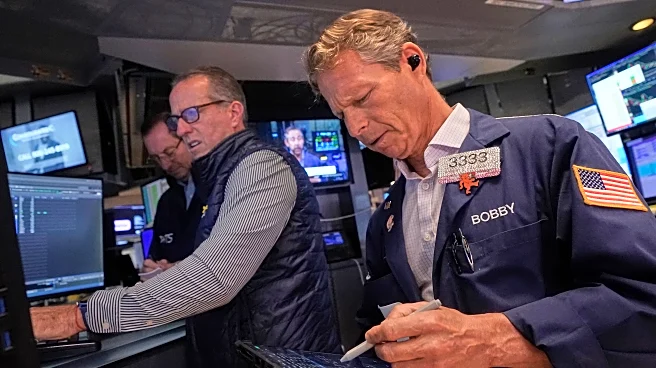What's Happening?
China's industrial output and retail sales growth in August fell short of expectations, according to official data. Industrial output grew by 5.2% year-on-year, down from 5.7% in July, and below the forecasted 5.7% increase. Retail sales, a key measure of consumer spending, expanded by 3.4% in August, compared to 3.7% in July, missing the anticipated 3.9% growth. Fixed asset investment also underperformed, growing by 0.5% in the first eight months of the year, against an expected 1.4% increase. These figures suggest a slowdown in China's economic activity, raising concerns about the country's growth trajectory.
Why It's Important?
China's economic performance is closely watched globally, as it impacts international trade and economic stability. The slowdown in industrial output and retail sales could signal weakening demand, affecting global supply chains and trade partners, including the U.S. A decline in China's economic growth may lead to reduced exports and investment opportunities for American businesses. Additionally, fluctuations in China's economy can influence global financial markets, impacting investor sentiment and economic forecasts.
What's Next?
The Chinese government may consider implementing policy measures to stimulate economic growth, such as fiscal incentives or monetary easing. These actions could aim to boost consumer spending and industrial production. The global market will likely monitor China's economic policies and their effectiveness in reversing the slowdown. U.S. businesses and investors may need to adjust their strategies in response to changes in China's economic outlook.
Beyond the Headlines
The economic slowdown in China could have broader implications for Sino-U.S. relations, particularly in trade negotiations and economic cooperation. It may also affect China's domestic policies, including efforts to transition to a consumption-driven economy. The situation underscores the interconnectedness of global economies and the importance of monitoring international economic trends.













